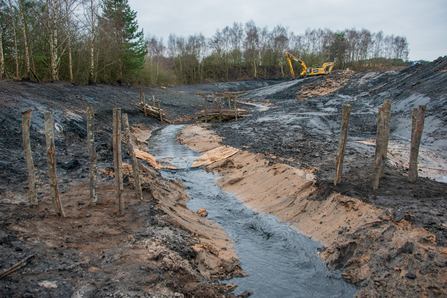In partnership with landowners The Welbeck Estates Company Ltd and contractors Ebsford Environmental Ltd, this ambitious restoration is part of The Three Rivers Restoration Project. The project is a collaboration between the Trust and Severn Trent which aims to deliver a programme of essential measures to improve the water environment in three rivers within the Idle Catchment, for which Nottinghamshire Wildlife Trust are the Catchment Hosts. The 3 rivers covered by the project are Rainworth Water, Vicar Water and the Bevercotes Beck. The Trust is being supported in the delivery of the Three Rivers Project by specialist staff from its subsidiary EMEC Ecology.
Vicar Water flows through the country park named after the river and then alongside Clipstone Colliery, owned by The Welbeck Estates Company Ltd. The 600m section undergoing restoration – from the railway bridge to Baulker Lane - was previously heavily modified, with much of it buried in an underground railway culvert. Initial ground works by Ebsford has now exposed the culvert, which hasn’t seen the light of day in around 70 years.




